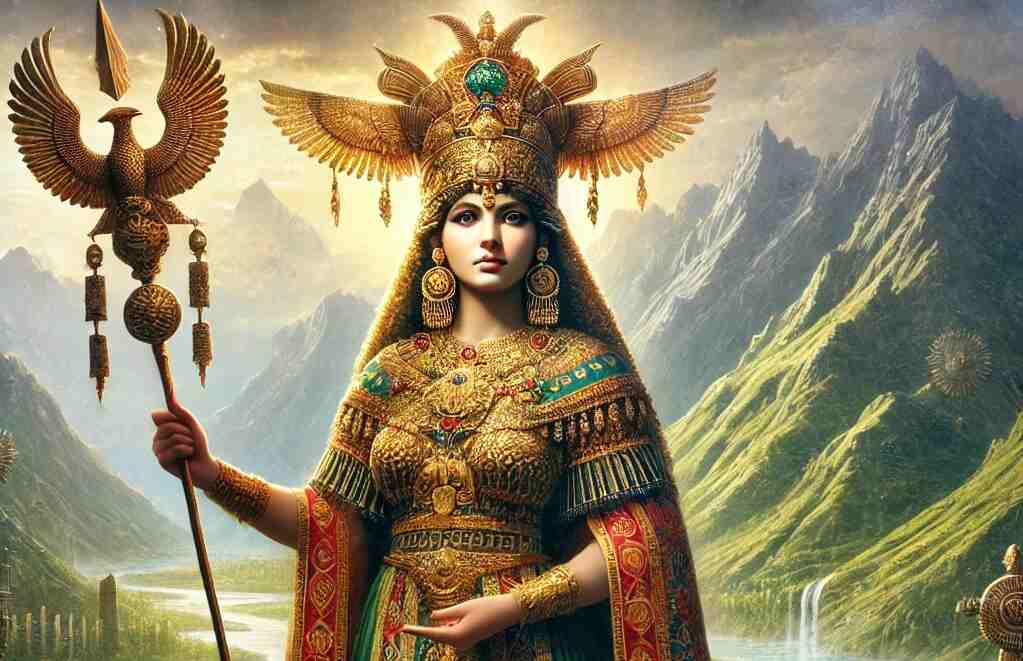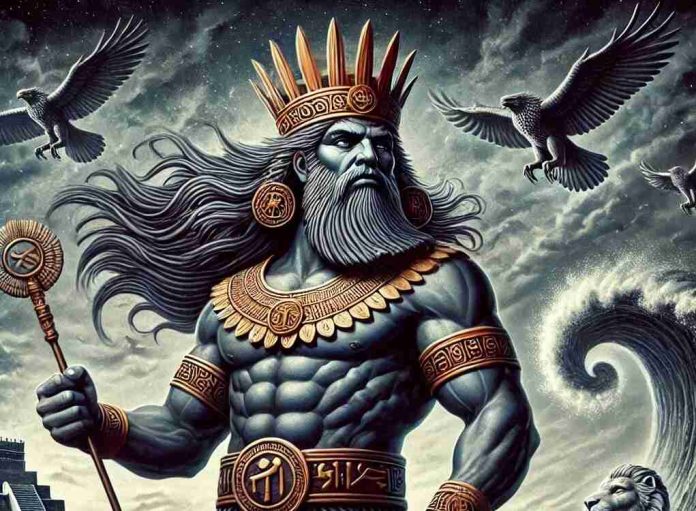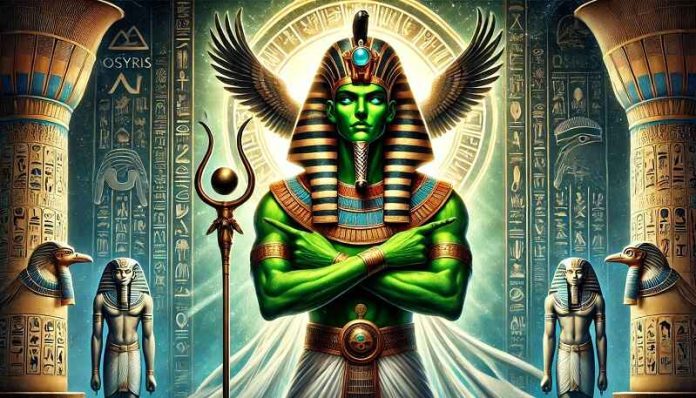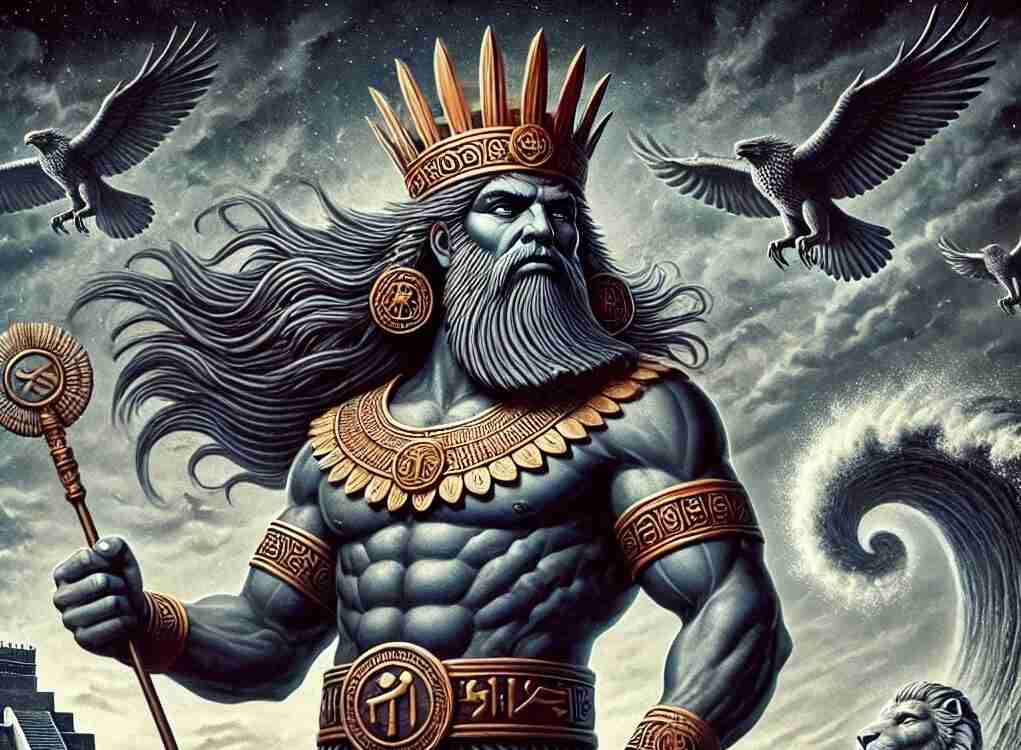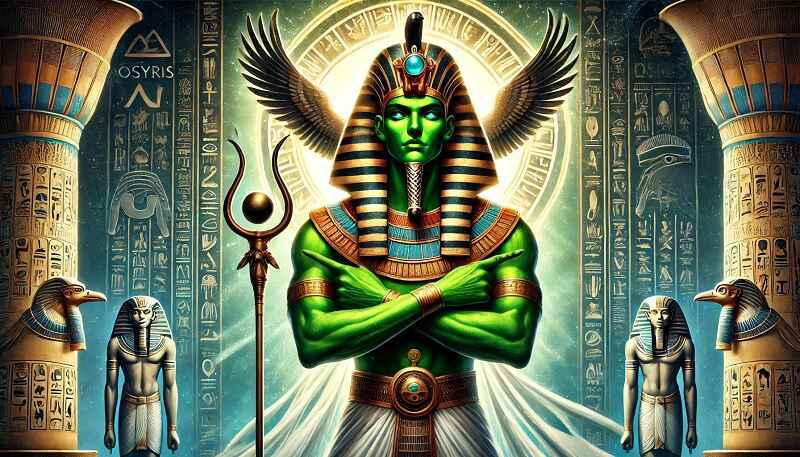Of all the deities that the ancient Mesopotamians worshipped, Ninhursag is one of the many mysterious goddesses that scholars neglect to discuss for some reason. Considered as a supreme deity and a fertility figure, Ninhursag’s role in the development of Sumerians’ lives and their expectations was once indisputable.
But over centuries, or millennia in fact, the presence of Eve started to disappear from the world of folk and legends, which was filled with her mysteries and questions instead. Who was Ninhursag? What did she do for her suppose ‘downfall’ and why did she disappear from the realm of myths? This article discusses the story of Ninhursag and raises questions regarding her presence in the Mesopotamian civilization and the questions which still remain unanswered.
Who is Ninhursag?
Ninhursag, known as Ninmah, Nintu, and Mamma, was one of the leading deities of Sumerian mythology and was worshipped as the Lady of the Mountain and the Mother of All Gods; the very name, Ninhursag, is derived from the Sumerian words nur, which stands for ‘light’, and Hur-Sag, which means ‘Sacred Mountain’. Unlike most of the related goddesses with clear job descriptions Ninhursag’s roles were much less distinct though she resembled the values of life earth creation and mother figure.
Ninhursag was thus one of the seven great gods and goddesses of Sumer and one of the leaders of the pantheon; she was famed for being the mother of all and the provider of human life. She was also the main deity of the Sumerians and performed so significant a function in relation to the religious beliefs of Sumer that she could be described as the nurse of kings.
Role of Ninhursag in Mesopotamian Religion
Ninhursag was a deity in the pantheon of gods and goddesses of Mesopotamia together with Enlil the god of wind and storms, Anu the god of sky, and Enki the god of earth and waters. She was, however, most of the time related to the earth and fertility and people could pray to her to bless their crops and animals. Her core function was, therefore, as a mother deity, which made her occupy a central status in the pantheon of Sumerian religion, which considered her to be the dual nam-shem pillar and a symbol of fertility.
Ninhursag is in a complex and nuanced way connected with the other gods. She was married to Enlil, the deity of the wind, and also, at times, to Enki, the deity of water; this makes Nisaba to be a counterpart to these strong deities. Still in an aspect of her functions as the mother of gods she is known to have given birth to certain gods such as Ninurta, the god of war and agriculture.
Creation of human beings was also a related area of interest to Ninhursag. In Sumerian mythology, she is credited as having a part in the process of creation, to be precise the creation of the first man and woman, fashioning them from clay and breathing life into them. The act of creation thus reaffirmed her in the role of life-bringer and nourisher which only served to elevate her status in the deification process.
The Myth of Enki and Ninhursag
The schema which has trickled down into later Mesopotamian myths is best illustrated in the story of Enki and Ninhursag, one of the most widespread myths about the creation of the universe. In the myth, the god of water and wisdom – Enki eats many plants and gets sick – the plants are called ‘me’ in the essay. It should be noted that, having been a mother and healer, Ninhursag interferes in the situation and, having given birth to eight gods, for each of the touched organs Enki becomes their incarnation. By doing so, she is able to rehabilitate Enki’s body and bring the ‘cosmic order’ back into existence.
Unfortunately, the myth of Enki and Ninhursag is rather ambiguous and symbolic focusing on the concept of creation and healing and the struggle between the forces at the universe. It also focuses on the aspect of Ninhursag, as life-giver and life-SAving which was one aspect of worship dedicated to Ninhursag.
The Eight Daughters of Ninhursag
Ninhursag as a mother is also further underlined by her giving birth to eight minor goddesses symbolizing life and nature, each of which represents one of the eight aspects. These daughters formed part of the healing process in the myth and the following is a breakdown of what each of them symbolizes – Area of power over which Ninhursag presided.
He lists these eight daughters of Ninhursaga as the following, and they are all deities associated with some form of agricultural production, fertility or healing. Such deities were created as an embodiment of Ninhursag as the mother-nurse and her close relation to the Earth. To be a part of this connection made her an essential link of the agrarian society in ancient Mesopotamia where fertility and nature’s physiognomy was a core function.
Symbols Associated with Ninhursag
Ninhursag is illustrated in ways that depict her as a mother goddess, as well as an earth deity. One of the most common logos linked to her is that of Omega, which symbolises the womb as well as the circle of life. Moreover, she is sometimes associated with vehicles – lions, signifying protection, or mountains as an emblem of the earth.
The Omega symbol has in specific been suggested to mean cycle of life and death, fertility and reproductive ability, and rebirth. This symbol, as well as others linked to Ninhursag, were widely incorporated into religious art of ancient Mesopotamian and thus strengthen the position of the goddess as one of the major and mighty deities.
Ninhursag as seen in Literature and Texts
Ninhursag is invoked in a number of Sumerian literatures and songs in which she is described as the provider of life and growth of everything alive. In the Gilgamesh Epic, there is one of the mentions of Ninhursag and in this epic, she is described as a giver of life and as a shield.
In these texts Ninhursag is depicted as a tenderhearted goddess intervening for human and nature’s welfare. It is for this reason that her image is depicted in these pieces of literature since she was very vital in the religion and customs of ancient Mesopotamia.
Ninhursag and Other Deities
Even though Ninhursag stood at the top of Sumerian pantheon, there were other mother gods. She is then relied to other related goddesses for instance Inanna or Ishtar, usually attributed to later times. In that way, Ninhursag stood in stark contrast to the Inanna who was the goddess of love, both amorous and in battle, and the fertility goddess par excellence.
It is also possible to trace the activity of Ninhursag in other cultures, for example, in the Egyptian mythology – with the goddess Isis. While both of the goddesses indeed have much in common, their protectiveness and maternal elements seem to be very close acquaintances. This comparative analysis uncovers the relationship of ancient myths and that which breaks down regional differences and puts them in a common cultural category.
On the decline of Nimursag worship
In due course, the worship of Ninhursag declined, even though she was an early favourite among worshippers, and new gods such as Inanna and Marduk were proliferated. This decline was occasioned by shift in religious beliefs and practices, where other gods consolidated power against him and changes in community culture.
When people turned to gods who were directly related to different zones of their life, to gods of war or buying and selling, for instance, a mother goddess would not seem to be as useful as before. This is evidenced by the fact that Ninhursag is hardly mentioned in later texts, and the attributes that she possessed were transferred to other goddesses.
Ninhursag in Modern Interpretations
Nowadays, people’s interest in the ancient myths and in the goddess worship process has risen again and, therefore, the goddess Ninhursag was rediscovered too. Contemporary analysis of the figure of Ninhursag is associated with her representation of the goddess of womanhood, fertility, and the carative features of the nature.
Of late, artists and writers have portrayed Ninhursag in different forms still using art and written works to propagate the cultures associated with her. This peculiarity can be explained by the fact that people have begun paying more attention to the polytheistic nature of prehistoric gods and their connections to contemporary faiths.
Theories and Speculations
Due to the unknown background of Ninhursag and her demigod-free existence, as well as her disappearance from the mytholocal canon, there are several hypothesises and assumptions throughout the years. It is proposed by some researchers that Ninhursag was, at the initial stage, a localized fertility deity of the Sumerians, who over time was integrated into the definite pantheon as the society evolved. Some scholars think that her worship could be connected with earlier, pre-Sumerian cultures, fertility cults.
Also, there are other hypotheses that Ninhursag could have affected the formation of the cult of mother goddesses in other cultures that were close to Mesopotamia. Such theories although hypothetical show how fascination by Ninhursag and her role in the early world has remained a mystery.
Unsolved Mysteries of Ninhursag
Although, today, numerous details about Ninhursag have been described there are a number of questions remains unanswered. Yet one of the most compelling questions concerns the nature of the mysterious collapse of her worship, and her virtual omission from usage in later periods. Another mystery concerns the true extent of her influence: was nymph Kalypsa really the saviour of the people or did she have a restricted cult place and followers only?
Such issues remain significant to scholars and engrossed lovers as to call for continuous search and analysis on life and impact of Ninhursag. And as archaeologists keep discovering new pieces of evidence we may one day uncover the closer picture of this mysterious goddess.
Frequently Asked Questions (FAQs)
1. What is Ninhursag the goddess of?
Ninhursag is the goddess of fertility, earth, and childbirth in Mesopotamian mythology. She is often regarded as the Mother of All Living and is associated with the nurturing and protection of life.
2. What is the myth of Enki and Ninhursag?
The myth of Enki and Ninhursag describes how Enki, the god of wisdom, consumes sacred plants belonging to Ninhursag, leading to a series of events where Ninhursag curses and eventually heals him, creating eight new deities in the process.
3. Who are the children of Enki and Ninhursag?
In the myth, Ninhursag creates eight deities to heal Enki, often referred to as her daughters. These include Ninsutu, Ninkasi, and Ninti, among others, each embodying different aspects of health and life.
4. What is Ninhursag’s symbol?
Ninhursag’s most prominent symbol is the omega (Ω), representing her as a life-giving force. She is also associated with lions, symbolizing her protective and powerful nature.
5. How do you pronounce Ninhursag?
Ninhursag is pronounced as “Nin-hur-sag,” with emphasis on the first syllable.
6. What is Ninhursag’s role in the Epic of Gilgamesh?
While not a central figure in the Epic of Gilgamesh, Ninhursag’s influence is present through her association with other gods in the narrative, particularly in themes of creation and the natural world.
Conclusion
Ninhursag, the mother goddess of Mesopotamia or perhaps of the entire universe, has been rather neglected in the annals of mythology. The fact of the OW being the patroness of creation, childbirth, and protection of living organisms made her one of the most adored gods of the Sumerians. However, the power of Ninhursag was fading as she was displaced by other goddesses and her history remains rather obscure.
Thus, as the exploration of ancient Mesopotamian religion progresses, it is important to consider the role and meaning which Ninhursag’s story might have carried to the societies of that time, as well as the general role of myths in the context of interaction of culture and religion. Although much remains unknown about the figure of Ninhursag, the subject is revealed to be an emblem of life and creation, which provides insight into the Sumerian peoples’ views on the unseen, divine reality.
Use of Our Content
⚠️ Content on “Mystery Uncover” is protected under US and International Copyright Laws.
You are free to reuse, republish, and share our content by giving credit to the source as Mystery Uncover with a link to the original material on mysteryuncover.com.


